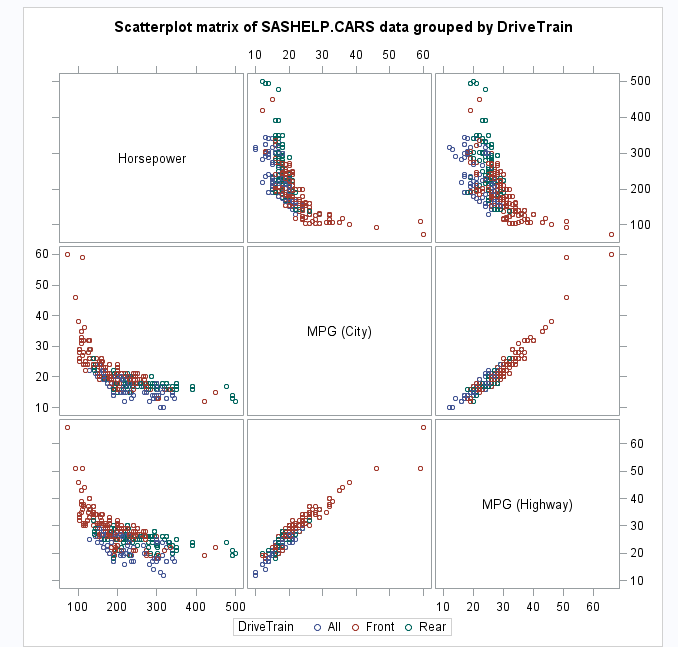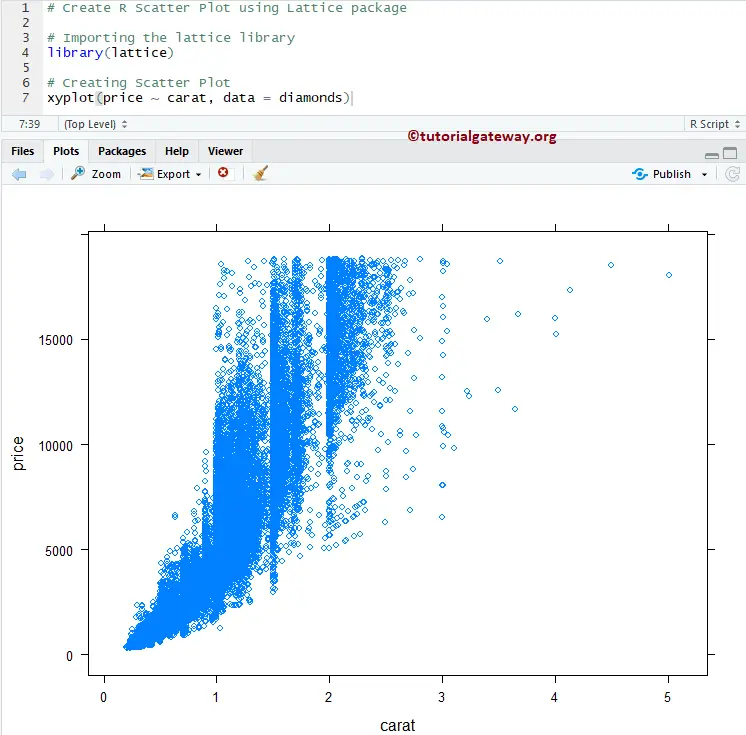

This is starting to get complicated, but we can write our own function to draw something else for the upper panels, such as the Pearson's correlation: It looks like most of the variables could be used to predict the species - except that using the sepal length and width alone would make distinguishing Iris versicolor and virginica tricky (green and blue) An actual engineer might use this to represent three dimensional physical objects. This type of image is also called a Draftsman's display - it shows the possible two-dimensional projections of multidimensional data (in this case, four dimensional).

> pairs(iris, main = "Edgar Anderson's Iris Data", pch = 21, bg = c("red", "green3", "blue")) How do the other variables behave? We could generate each plot individually, but there is quicker way, using the pairs command on the first four columns: Using different colours its even more clear that the three species have very different petal sizes. > plot(iris$Petal.Length, iris$Petal.Width, pch=21, bg=c("red","green3","blue"), main="Edgar Anderson's Iris Data") We can do the same trick to generate a list of colours, and use this on our scatter plot: How? unclass(iris$Species) turns the list of species from a list of categories (a "factor" data type in R terminology) into a list of ones, twos and threes: > c(23,24,25) This works by using c(23,24,25) to create a vector, and then selecting elements 1, 2 or 3 from it.

> plot(iris$Petal.Length, iris$Petal.Width, pch=c(23,24,25), main="Edgar Anderson's Iris Data") the trick is to create a list mapping the species to say 23, 24 or 25 and use that as the pch argument: Consulting the help, we might use pch=21 for filled circles, pch=22 for filled squares, pch=23 for filled diamonds, pch=24 or pch=25 for up/down triangles. We could use the pch argument (plot character) for this. Its interesting to mark or colour in the points by species. > plot(iris$Petal.Length, iris$Petal.Width, main="Edgar Anderson's Iris Data") Lets do a simple scatter plot, petal length vs. You can also get the petal lengths by iris or iris (treating the data frame like a matrix/array). "Sepal.Length" "Sepal.Width" "Petal.Length" "Petal.Width" "Species" The iris variable is a ame - its like a matrix but the columns may be of different types, and we can access the columns by name: > class(iris) Sepal.Length Sepal.Width Petal.Length Petal.Width Species We can inspect the data in R like this: > iris On this page there are photos of the three species, and some notes on classification based on sepal area versus petal area. The iris dataset (included with R) contains four measurements for 150 flowers representing three species of iris ( Iris setosa, versicolor and virginica). In the follow-on page I then have a quick look at using linear regressions and linear models to analyse the trends.
#Scatter plot in r studio how to
This page was inspired by the eighth and ninth demo examples.įirst I introduce the Iris data and draw some simple scatter plots, then show how to create plots like this:

#Scatter plot in r studio code
Did you know R has a built in graphics demonstration? Type demo(graphics) at the prompt, and its produce a series of images (and shows you the code to generate them).


 0 kommentar(er)
0 kommentar(er)
